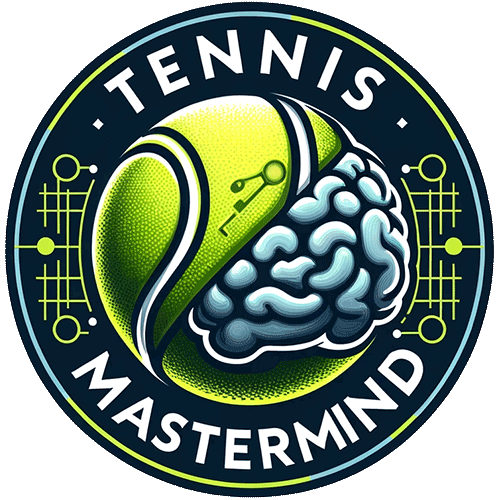Greetings, fellow tennis enthusiasts! Whether you’ve just picked up a racquet or are getting back into the game, mastering the basics of tennis strategy is essential for your success on the court. In this article, we’ll explore eight fundamental strategies that can help new players elevate their skills and outsmart their opponents. So, let’s dive in and discover how you can level up your game!
Key Takeaways:
- Out-rallying the opponent by focusing on consistency and depth can help keep the ball in play and force errors.
- Playing aggressively involves hitting the ball with power and catching balls early to keep the opponent on the defensive.
- Playing to your strengths leverages your best shots to maximize your performance on the court.
- Attacking the opponent’s weakness by targeting their vulnerable shots can disrupt their game and give you an advantage.
- Bringing the opponent to the net can be effective against players who struggle with volleys and close-range shots.
By incorporating these basic tennis strategies into your game, you’ll develop a strong foundation and increase your chances of success. So, grab your racquet, hit the court, and let’s play some winning tennis!
Out-Rally the Opponent
In tennis, one of the key strategies for singles players is to out-rally the opponent. This approach focuses on consistency and depth, aiming to keep the ball in play until the opponent makes a mistake. By employing this strategy, players can increase their chances of winning the point and gaining an advantage in the match.
When employing the out-rallying strategy, it is essential to hit the ball at a controlled pace, ensuring accuracy and placement. Aim for large targets on the court, allowing for margin of error and increasing the chance of hitting within the lines. Additionally, hitting the ball high over the net can create difficulties for the opponent, making it harder for them to attack or hit aggressive shots.
Crosscourt shots are a key aspect of the out-rallying strategy. By predominantly hitting the ball crosscourt, players can increase the margin of error, as the court is wider and longer. This shot selection helps in maintaining consistency and forcing the opponent to cover more ground.
Consistency and control are vital elements of the out-rallying strategy. Practicing drills such as rallying with a partner can enhance consistency, as it allows players to focus on ball control and maintaining a consistent rhythm. Playing “no winner” points, where the objective is to keep the ball in play without going for winners, can also help in developing consistency and patience on the court.
Visualize the out-rallying strategy with the following table:
| Components of Out-Rallying Strategy | Techniques |
|---|---|
| Controlled Pace | Hit the ball with controlled power |
| Aiming for Large Targets | Focus on hitting within large target areas on the court |
| High Over the Net | Elevate shots to create difficulties for the opponent |
| Crosscourt Shots | Hit predominantly crosscourt to increase margin of error |
Remember, out-rallying the opponent requires consistency, patience, and control. Incorporating this strategy into your game can help you stay in control of the point and increase your chances of success.
Play Aggressively
Playing aggressively is a powerful tennis strategy that can give you an edge on the court. It involves taking control of the point by hitting the ball hard and early, putting pressure on your opponent and forcing them to play defensively. By employing an aggressive playing style, you can dictate the pace, disrupt your opponent’s rhythm, and create opportunities to attack.
To execute an aggressive tennis strategy, start by focusing on your serve and return. Aim to deliver a strong serve that forces your opponent into a defensive position, making it difficult for them to launch a powerful return. On the return, look for opportunities to step into the court and take control of the point.
Once the point is in play, continue your aggressive approach by stepping into the court and driving the ball back with force. Take advantage of any short or weak balls by attacking them aggressively, aiming for winners or forcing errors from your opponent. Use a mix of power and precision to keep your opponent off balance and maintain the upper hand.
Developing an aggressive playing style requires practice and drills that emphasize attacking shots. One effective drill is the “3 serves and 1 serve” exercise. In this drill, you hit the first three serves aggressively to specific targets, and then follow up with one serve where you focus on placing the ball strategically. This helps hone your aggressive serve and return skills.
Playing aggressively can be a game-changer in tennis. It allows you to take control of the point, put your opponent on the back foot, and create opportunities for winners. Remember, aggression combined with precision can make you a formidable force on the court.
Play to Your Strengths
Playing to your strengths is an effective strategy to improve your performance without making major changes to your game. If you have a stronger forehand, for example, try to hit more forehands by positioning yourself on the backhand side. If you’re a patient and consistent player, stay behind the baseline and focus on retrieving balls and keeping them in play.
When it comes to understanding your tennis strengths and weaknesses, it’s essential to identify your best shot. By recognizing your dominant skill, you can build your game plan around it. Whether it’s a powerful serve, a precise backhand, or a reliable volley, maximizing the use of your go-to shot can give you an advantage over your opponents.
Practice drills that emphasize playing with only your best shot can help reinforce this strategy. By dedicating focused training sessions to your dominant skill, you can refine and enhance it even further. This targeted practice not only boosts your confidence but also improves your ability to execute your best shot under pressure.
Remember, it’s not about neglecting other aspects of your game. Instead, it’s about strategically playing to your strengths while maintaining a well-rounded overall game. By capitalizing on your strengths, you increase the likelihood of winning points and gaining momentum throughout the match.
Playing to Your Best Shot
“To maximize your potential on the court, it’s crucial to play to your strengths. By leveraging your best shot, you can dictate the flow of the game and put pressure on your opponents.”
When playing to your best shot, consider position and shot selection. Position yourself on the court to optimize your opportunities to utilize your dominant shot. For example, if your forehand is your strength, position yourself on the backhand side to receive more balls on your forehand side.
Additionally, shot selection plays a vital role. Look for opportunities to set up and execute your best shot. Take advantage of weak returns from your opponent or situations where you can create openings for your go-to shot.
Playing to your strengths requires understanding your game and making smart choices on the court. By capitalizing on your best shot, you can increase your chances of winning more points and ultimately the match.

Attack the Opponent’s Weakness
Exploiting weaknesses in tennis can give you a significant advantage over your opponent. By specifically targeting their weaker areas, you can disrupt their game plan and gain control of the match. This strategic approach requires careful observation and analysis of your opponent’s strengths and weaknesses.
“Targeting weak areas in your opponent’s game allows you to put them under pressure and force errors. It’s about finding their vulnerabilities and exploiting them to your advantage.”
One effective way to attack your opponent’s weakness is by consistently directing the ball to their weaker side. Whether it’s a backhand that lacks power or a forehand that struggles with accuracy, focus on exploiting their limitations. This constant pressure can throw off their rhythm, forcing them to make mistakes.
- Study your opponent: Observe and analyze their gameplay to identify their weak areas.
- Strategize your shots: Plan your shots to exploit their weaknesses and expose their vulnerabilities.
- Change the pace: Vary the speed and spin of your shots to keep your opponent off balance.
- Maintain consistency: Aim for deep shots and keep the ball in play to consistently attack their vulnerable areas.
Practice Drill: One-Sided Court
To improve your ability to attack the opponent’s weakness, try playing points where one player has to hit everything to one side of the court. This drill will help you develop precision and control as you exploit your opponent’s weaker side. Remember to keep the rally going, focusing on consistency and accuracy.
By exploiting weaknesses in tennis, you can gain a significant advantage over your opponent. Targeting weak areas in their game disrupts their rhythm and opens up opportunities for you to dominate the match. Incorporating this strategy into your game plan will make you a more formidable player.
Bringing the Opponent to the Net
Bringing the opponent to the net is a strategic move that can disrupt their comfort zone and give you an advantage on the tennis court. This tactic works particularly well against consistent players who are uncomfortable at the net. To execute this strategy effectively, you need to play consistently and patiently, waiting for the right opportunity to bring your opponent forward.
One effective way to bring the opponent to the net is by patiently playing long rallies, hitting deep shots that force them to move back and forth. By maintaining consistency and control, you can gradually frustrate your opponent and lure them towards the net in search of a more offensive shot.
Once you see an opportunity, it’s time to strike. Look for a short ball from your opponent, something that lands close to the service line or even shorter. When you spot this opening, unleash a well-executed drop shot or a short, low ball that stays closer to the net. Hitting these shots with slice can add extra spin and make them even trickier for your opponent to handle.
By using this strategy, you force your opponent out of their comfort zone, forcing them to adapt to a different style of play. Many players find it challenging to play at the net, especially if they are more comfortable on the baseline. By bringing them to the net, you can exploit their weaknesses and gain an edge in the match.
Practice drills can help you improve your execution of this strategy. Try playing games where a drop shot winner is worth more points, encouraging you to focus on using this shot in the right situations. Incorporate different variations of the short balls into your practice sessions, honing your accuracy and control. Remember, the key is to remain patient and wait for the right opportunity to bring the opponent to the net.

“Bringing the opponent to the net can disrupt their comfort zone and give you a strategic advantage. By playing consistently and patiently, you can lure them forward and capitalize on their weaknesses. Remember to be ready and strike with a well-executed drop shot or a short, low ball.”
Conclusion
By incorporating these basic tennis strategies into our gameplay, new players can develop a strong foundation for their game and improve their chances of success on the court. These strategies, such as out-rallying the opponent, playing aggressively, playing to our strengths, attacking the opponent’s weakness, bringing the opponent to the net, using variety, and opening the court, lay the groundwork for a tactical game plan.
Consistency and control are key to out-rallying the opponent, while playing aggressively involves hitting the ball hard and catching it early to force the opponent to play defensively. Playing to our strengths allows us to maximize our natural abilities, and attacking the opponent’s weakness can give us a competitive advantage. Bringing the opponent to the net can be particularly effective against consistent players uncomfortable at the net.
To further enhance our skills, practice drills focused on each strategy are recommended. With dedication and practice, new players can improve their consistency, aggressiveness, and ability to exploit opponents’ weaknesses. Remember, winning isn’t everything, but by utilizing these strategies, new players can increase their chances of success on the court.




